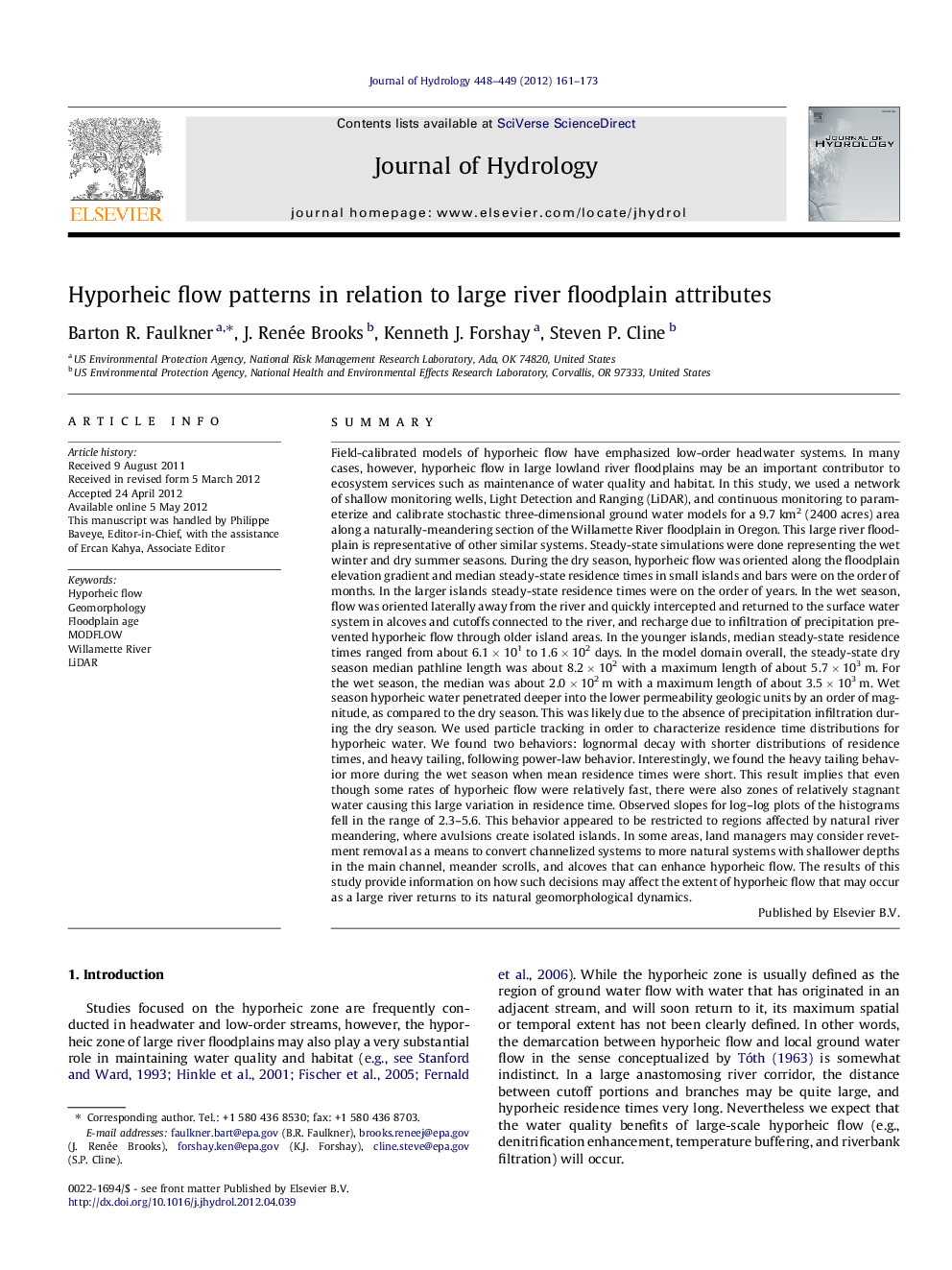| کد مقاله | کد نشریه | سال انتشار | مقاله انگلیسی | نسخه تمام متن |
|---|---|---|---|---|
| 4576962 | 1629987 | 2012 | 13 صفحه PDF | دانلود رایگان |

SummaryField-calibrated models of hyporheic flow have emphasized low-order headwater systems. In many cases, however, hyporheic flow in large lowland river floodplains may be an important contributor to ecosystem services such as maintenance of water quality and habitat. In this study, we used a network of shallow monitoring wells, Light Detection and Ranging (LiDAR), and continuous monitoring to parameterize and calibrate stochastic three-dimensional ground water models for a 9.7 km2 (2400 acres) area along a naturally-meandering section of the Willamette River floodplain in Oregon. This large river floodplain is representative of other similar systems. Steady-state simulations were done representing the wet winter and dry summer seasons. During the dry season, hyporheic flow was oriented along the floodplain elevation gradient and median steady-state residence times in small islands and bars were on the order of months. In the larger islands steady-state residence times were on the order of years. In the wet season, flow was oriented laterally away from the river and quickly intercepted and returned to the surface water system in alcoves and cutoffs connected to the river, and recharge due to infiltration of precipitation prevented hyporheic flow through older island areas. In the younger islands, median steady-state residence times ranged from about 6.1 × 101 to 1.6 × 102 days. In the model domain overall, the steady-state dry season median pathline length was about 8.2 × 102 with a maximum length of about 5.7 × 103 m. For the wet season, the median was about 2.0 × 102 m with a maximum length of about 3.5 × 103 m. Wet season hyporheic water penetrated deeper into the lower permeability geologic units by an order of magnitude, as compared to the dry season. This was likely due to the absence of precipitation infiltration during the dry season. We used particle tracking in order to characterize residence time distributions for hyporheic water. We found two behaviors: lognormal decay with shorter distributions of residence times, and heavy tailing, following power-law behavior. Interestingly, we found the heavy tailing behavior more during the wet season when mean residence times were short. This result implies that even though some rates of hyporheic flow were relatively fast, there were also zones of relatively stagnant water causing this large variation in residence time. Observed slopes for log–log plots of the histograms fell in the range of 2.3–5.6. This behavior appeared to be restricted to regions affected by natural river meandering, where avulsions create isolated islands. In some areas, land managers may consider revetment removal as a means to convert channelized systems to more natural systems with shallower depths in the main channel, meander scrolls, and alcoves that can enhance hyporheic flow. The results of this study provide information on how such decisions may affect the extent of hyporheic flow that may occur as a large river returns to its natural geomorphological dynamics.
Figure optionsDownload as PowerPoint slideHighlights
► Hyporheic flow in a natural large river system was characterized.
► Dry season hyporheic flow oriented along floodplain gradient.
► Residence time distributions consistent with power-law PDF.
► Wet season hyporheic flow residence times an order of magnitude shorter.
► Wet season season hyporheic flow oriented laterally away from river.
Journal: Journal of Hydrology - Volumes 448–449, 2 July 2012, Pages 161–173